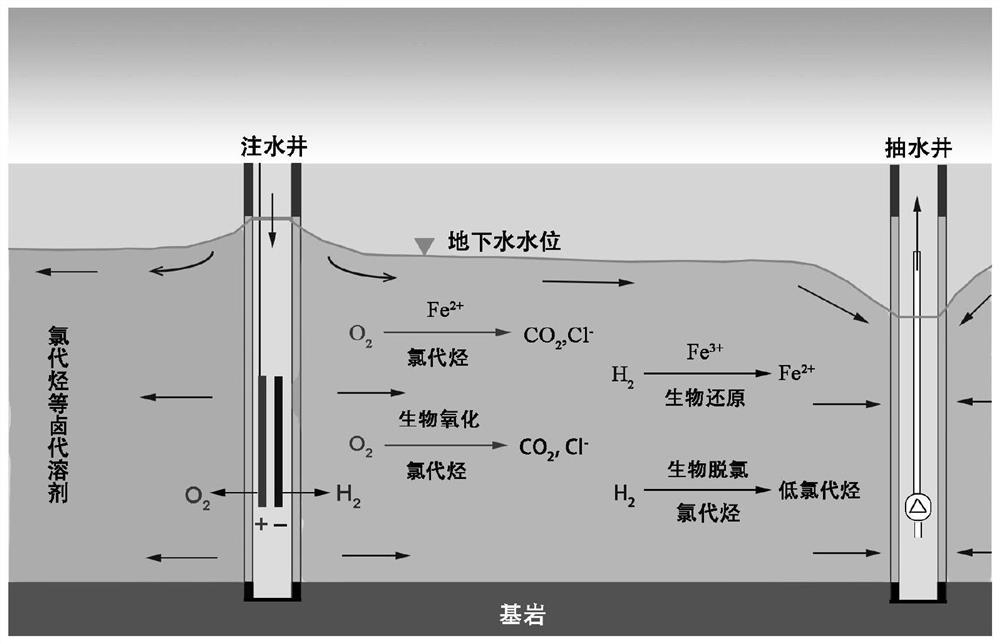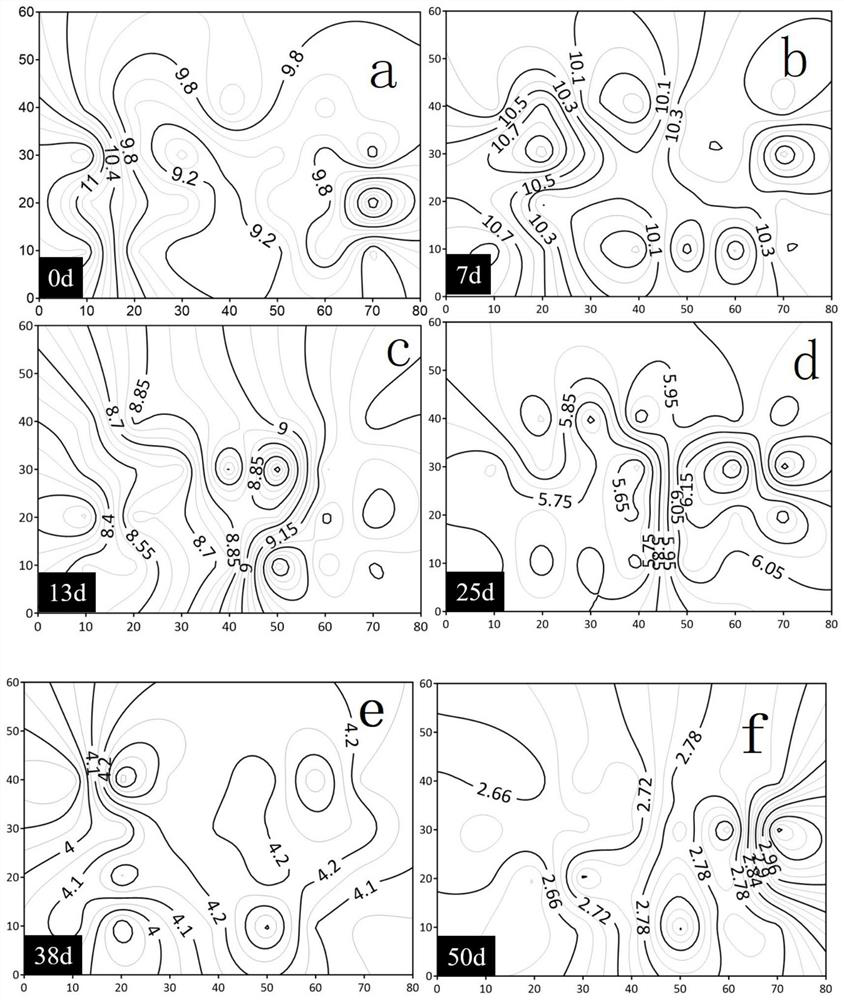A method for in-situ electrochemical circulation well repair of chlorinated hydrocarbon polluted groundwater
An in-situ electrochemical and remediation method technology is applied in the field of in-situ electrochemical circulation well remediation of chlorinated hydrocarbon-contaminated groundwater, which can solve the problems of pollutant leakage, groundwater level rise, affecting in-situ water flow field, etc., and achieves low voltage. , the effect of short distance between poles
- Summary
- Abstract
- Description
- Claims
- Application Information
AI Technical Summary
Problems solved by technology
Method used
Image
Examples
Embodiment 1
[0046] refer to figure 2 , using plexiglass tanks to build a simulated aquifer, the dimensions of the plexiglass tanks are: length x width x height = 80 x 60 x 60cm 3 , the plexiglass tank is filled with 1-4m of actual sediment from a certain place in the Jianghan Plain, mainly sandy soil, with a permeability coefficient of about 10 -2 cm / s, install transparent plexiglass tubes as water injection wells and pumping wells 5cm away from the left and right sides of the plexiglass tank. The outer diameter of the transparent plexiglass tubes is 50mm, the inner diameter is 40mm, and the length is 70cm. The bottom of the tube is closed, and 6 holes (aperture is 0.5cm) are opened in a circle every 5cm at the side 45cm of two transparent plexiglass tubes to communicate with the outside, and nylon gauze is put on around the transparent plexiglass tube as a filter screen; Coated with IrO 2 and Ta 2 o 5 The plate-shaped titanium-based electrode is used as the cathode and anode. The si...
PUM
| Property | Measurement | Unit |
|---|---|---|
| diameter | aaaaa | aaaaa |
| diameter | aaaaa | aaaaa |
| length | aaaaa | aaaaa |
Abstract
Description
Claims
Application Information
 Login to View More
Login to View More - R&D
- Intellectual Property
- Life Sciences
- Materials
- Tech Scout
- Unparalleled Data Quality
- Higher Quality Content
- 60% Fewer Hallucinations
Browse by: Latest US Patents, China's latest patents, Technical Efficacy Thesaurus, Application Domain, Technology Topic, Popular Technical Reports.
© 2025 PatSnap. All rights reserved.Legal|Privacy policy|Modern Slavery Act Transparency Statement|Sitemap|About US| Contact US: help@patsnap.com



